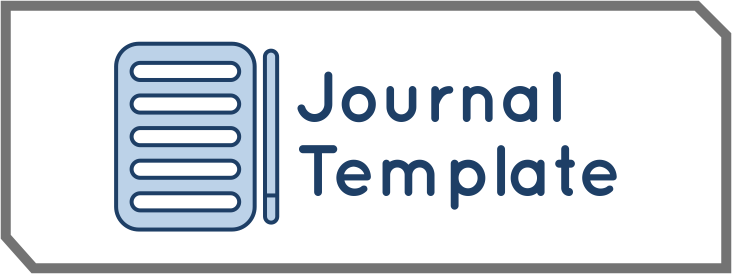Comparative Analysis of Pricing and Features of Cloud-Based Accounting Software in Indonesia
A Study of Secondary Data from E-Marketplace
DOI:
https://doi.org/10.55606/ijemr.v4i3.553Keywords:
Accounting Software, Cloud Accounting, Comparative Analysis, Pricing Strategy, Software FeaturesAbstract
The development of cloud technology itself has encouraged digitalization in various sectors, including accounting. In Indonesia, for example, more and more businesses—especially micro, small, and medium enterprises (MSMEs)—have begun to switch to using cloud-based accounting software to improve the efficiency, accuracy, and accessibility of financial management. This transition is not only driven by the need for real-time data and automation but also by the increasing availability of affordable internet infrastructure and government support for MSME digital transformation. This study aims to conduct a comparative analysis of the price and main features of four popular cloud accounting software in Indonesia, namely Beecloud, Jurnal by Mekari, Accurate Online, and Kledo. These four platforms have been selected based on their popularity, user base, and relevance for MSMEs in Indonesia. The data for this study was collected secondarily through each provider’s official website and publicly available documentation during the period of May 1–5, 2025. The method used is a descriptive-comparative quantitative approach, which involves analysis techniques such as descriptive statistics, price-per-feature ratio calculations, and data visualization tools including tables, bar charts, heatmaps, and scatter plots. This approach allows for a comprehensive understanding of both the cost structure and functional range of each product. The results show that there are significant differences in pricing models and the number of features offered. Beecloud SME offers the lowest price-per-feature ratio, suggesting high value for cost-conscious users. On the other hand, Jurnal Enterprise has the highest ratio, indicating a more premium pricing strategy that may be more suitable for medium to large enterprises with more complex needs.
References
Aziz, A. J., Setiawan, A. B., Anwar, S., Awa, A., & Damayanti, D. R. (2023). Cloud accounting system: Analysis of the impact of use on the quality of financial reporting. Academic Journal, 10(2), 90–103. https://doi.org/10.30997/jakd.v10i2.16156
Barus, E., Pardede, K. M., & Putri Br. Manjorang, J. A. (2024). Digital transformation: Cloud computing technology in accounting efficiency. Journal of Science and Technology, 5(3), 904–911. https://doi.org/10.55338/saintek.v5i3.2862
Bello, S. A., Oyedele, L. O., Akinade, O. O., Bilal, M., Davila Delgado, J. M., Akanbi, L. A., Ajayi, A. O., & Owolabi, H. A. (2021). Cloud computing in construction industry: Use cases, benefits and challenges. Automation in Construction, 122, 103441. https://doi.org/10.1016/j.autcon.2020.103441
Bochkay, K., Brown, S. V., Leone, A. J., & Tucker, J. W. (2023). Textual analysis in accounting: What’s next? Contemporary Accounting Research, 40(2), 765–805. https://doi.org/10.1111/1911-3846.12825
Cai, C. W. (2021). Triple‐entry accounting with blockchain: How far have we come? Accounting & Finance, 61(1), 71–93. https://doi.org/10.1111/acfi.12556
Castro-Schez, J. J., Grande, R., Herrera, V., Schez-Sobrino, S., Vallejo, D., & Albusac, J. (2024). E-marketplace state of the art and trends: VR-ZOCO—An architectural proposal for the future. Applied System Innovation, 7(5), 76. https://doi.org/10.3390/asi7050076
Christian, Y., & Utama, Y. (2021). Issues and determinant factors of customer feedback on e-commerce (e-marketplace). In 2021 International Conference on Information Management and Technology (ICIMTech) (pp. 234–239). IEEE. https://doi.org/10.1109/ICIMTech53080.2021.9535075
Comte, A., Campagne, S., Lange, S., Bruzón, A. G., Hein, L., Santos-Martín, F., & Levrel, H. (2022). Ecosystem accounting: Past scientific developments and future challenges. Ecosystem Services, 58, 101486. https://doi.org/10.1016/j.ecoser.2022.101486
Dalle, J., Hayat, A., Karim, A., Tirtayasa, S., Sulasmi, E., & Prasetia, I. (2020). The influence of accounting information system and energy consumption on carbon emission in the textile industry of Indonesia: Mediating role of the supply chain process. International Journal of Energy Economics and Policy, 11(1), 536–543. https://doi.org/10.32479/ijeep.10693
Dong, M. M., Stratopoulos, T. C., & Wang, V. X. (2024). A scoping review of ChatGPT research in accounting and finance. International Journal of Accounting Information Systems, 55, 100715. https://doi.org/10.1016/j.accinf.2024.100715
Duan, S., Wang, D., Ren, J., Lyu, F., Zhang, Y., Wu, H., & Shen, X. (2023). Distributed artificial intelligence empowered by end-edge-cloud computing: A survey. IEEE Communications Surveys & Tutorials, 25(1), 591–624. https://doi.org/10.1109/COMST.2022.3218527
Faizah, F., Soemaryono, S., & Kamayanti, A. (2021). Study of institutionalization of cloud server-based accounting information systems. Media Mahardhika, 20(1), 81–95. https://doi.org/10.29062/mahardika.v20i1.302
Faltusová, V., Vaculovič, T., Holá, M., & Kanický, V. (2022). Ilaps – Python software for data reduction and imaging with LA-ICP-MS. Journal of Analytical Atomic Spectrometry, 37(4), 733–740. https://doi.org/10.1039/D1JA00383F
Feng, Z., Hardin, J., Barnes, H. C., Li, J., Leung, L. R., Varble, A., & Zhang, Z. (2023). PyFLEXTRKR: A flexible feature tracking Python software for convective cloud analysis. Geoscientific Model Development, 16(10), 2753–2776. https://doi.org/10.5194/gmd-16-2753-2023
Fiddin, F. F., & Arief, M. (2022). The effect of computer anxiety, computer attitude, and computer self-efficacy, conditions that facilitate users, and social factors on the interest of computerized accounting students using accounting software. AKUA: Journal of Accounting and Finance, 1(1), 86–94. https://doi.org/10.54259/akua.v1i1.182
Ghio, A., Occhipinti, Z., & Verona, R. (2024). The consideration of diversity in the accounting literature: A systematic literature review. European Accounting Review, 33(5), 1667–1691. https://doi.org/10.1080/09638180.2024.2330089
Golightly, L., Chang, V., Xu, Q. A., Gao, X., & Liu, B. S. (2022). Adoption of cloud computing as innovation in the organization. International Journal of Engineering Business Management, 14. https://doi.org/10.1177/18479790221093992
Handayani, M., Sulistiyantoro, D., & Nusa, G. H. (2022). The effect of computer anxiety, computer attitude and computer self-efficacy on students' interest in using accounting software. EKOMAKS Journal of Management Economics and Accounting, 11(1), 153–160. https://doi.org/10.33319/jeko.v11i1.107
Hasan, A. R. (2021). Artificial intelligence (AI) in accounting & auditing: A literature review. Open Journal of Business and Management, 10(1), 440–465.
Hossain, M. I., Azam, M. S., & Quaddus, M. (2021). Small firm entry to e-marketplace for market expansion and internationalization: A theoretical perspective. Journal of International Entrepreneurship, 19(4), 560–590. https://doi.org/10.1007/s10843-021-00297-5
Karinda, A., Muntuan, J., & Mambu, M. (2023). Analysis of the implementation of cloud-based accounting system at CV Aneka Jaya Bitung. Journal of Applied Management and Business Sciences, 6(1), 38–64. https://doi.org/10.58303/jtimb.v6i1.3066
Komala, R., Fahry, F., & Elisa, N. (2024). Improving financial transparency: Implementation of a cloud-based accounting information system. Journal of Socioeconomics and Humanities, 10(4), 670–675. https://doi.org/10.29303/jseh.v10i4.702
Loro, C., & Mangiaracina, R. (2022). The impact of e-marketplace on the B2B relationships. Industrial Management & Data Systems, 122(1), 37–54. https://doi.org/10.1108/IMDS-11-2020-0651
Malini, K. T. W., & Herbert, N. T. (2021). The effect of the effectiveness of the use of BPUM funds, the use of accounting software, and human capital on the performance of micro businesses (Study on micro businesses receiving BPUM funds in Buleleng District). Journal of Professional Accounting, 12(1), 97. https://doi.org/10.23887/jap.v12i1.34606
Matondang, J. G. M., & Yanti, H. B. (2023). The level of satisfaction of MSME business people with cloud-based accounting software. Journal of Economics of Trisakti, 3(1), 1469–1480. https://doi.org/10.25105/jet.v3i1.16176
McConville, D. (2023). Disruptive technologies: Implications for third-level accounting education. Accounting, Finance & Governance Review, 30. https://doi.org/10.52399/001c.77369
Mohammed Sadeeq, M., Abdulkareem, N. M., Zeebaree, S. R. M., Mikaeel Ahmed, D., Saifullah Sami, A., & Zebari, R. R. (2021). IoT and cloud computing issues, challenges and opportunities: A review. Qubahan Academic Journal, 1(2), 1–7. https://doi.org/10.48161/qaj.v1n2a36
Mohammed, K., & Salem, A. A. (2023). The impact of modern technology on the skills of accountants: Analytical study. In 2023 3rd International Conference on Emerging Smart Technologies and Applications (eSmarTA) (pp. 1–6). IEEE. https://doi.org/10.1109/eSmarTA59349.2023.10293378
Murwaningsari, E., & Gunawan, J. (2021). Technology factors in cloud accounting during the era of COVID-19 outbreak: A lesson from the Indonesian banking sector. International Journal of Business, Economics and Law, 24(6), 102–111.
N., Zulfi Agha, R., Redyanita, H., Vidyasari, R., & Mahatmyo, A. (2023). The effectiveness of the utilization of cloud accounting in MSME financial management. Economics & Business, 22(2), 209–216. https://doi.org/10.32722/eb.v22i2.6382
Nandankar, S., Sachan, A., Adhikari, A., & Mukherjee, A. (2023). Developing and validating e-marketplace service quality model in B2G e-commerce settings: A mixed-methods approach. International Journal of Operations & Production Management, 43(12), 1809–1840. https://doi.org/10.1108/IJOPM-05-2022-0333
Novitasari, N., Agha, R. Z., Sixpria, N., Mahatmyo, A., & Redyanita, H. (2023). Training on accounting basics and assistance in preparing MSME financial statements using SI APIK's cloud-based accounting application. Journal of Artificial Intelligence, 10(4), 2892–2902. https://doi.org/10.29303/abdiinsani.v10i4.1272
Odonkor, B., Kaggwa, S., Uwaoma, P. U., Hassan, A. O., & Farayola, O. A. (2024). The impact of AI on accounting practices: A review: Exploring how artificial intelligence is transforming traditional accounting methods and financial reporting. World Journal of Advanced Research and Reviews, 21(1), 172–188. https://doi.org/10.30574/wjarr.2024.21.1.2721
Pancane, I. W. D., & Nityananda, N. P. (2023). The application of cloud-based accounting software as performance efficiency in IBS Consulting based on Jurnal.Id. Abdi: Journal of Community Service and Empowerment, 5(3), 440–446. https://doi.org/10.24036/abdi.v5i3.304
Pradesa, E., Syahrani, T., & Sakti, R. E. (2023). Digital transformation of software as a service adoption of cloud accounting services by MSMEs. EKOMBIS REVIEW: Scientific Journal of Economics and Business, 11(2). https://doi.org/10.37676/ekombis.v11i2.3949
Pradipa, N. A., Munidewi, I. A. B., & Sukarta, M. A. P. (2024). Comparative analysis of student perceptions in the use of digital accounting applications. Kompeten: Scientific Journal of Economics and Business, 3(1), 919–924. https://doi.org/10.57141/kompeten.v3i1.136
Putra, I. S., & Wardani, N. A. K. (2022). Factors that affect the behavioral intention to use of accounting software in MSMEs. Journal of Politala Accounting Research, 5(2), 60–74. https://doi.org/10.34128/jra.v5i2.130
Ricky, R., Maisyarah, R., & Purba, R. Br. (2024). The effect of the implementation of the cloud accounting information system of Jurnal ID with the level of understanding of the use of technology by users as a moderation variable on the quality of financial statements on CV Jaya Perkasa Abadi. Transekonomics: Accounting, Business and Finance, 4(1), 31–46. https://doi.org/10.55047/transekonomika.v4i1.604
Salsabila, A., & Febriani, D. (2022). Factors that affect students' perception of using accounting software during distance learning. Accounting and Information Technology, 15(2), 151–174. https://doi.org/10.24123/jati.v15i2.5043
Sandhu, A. K. (2022). Big data with cloud computing: Discussions and challenges. Big Data Mining and Analytics, 5(1), 32–40. https://doi.org/10.26599/BDMA.2021.9020016
Suharyono, S. (2021). Application of accounting software in Ferolas MSMEs. Journal of Accounting and Finance, 10(1), 1–6. https://doi.org/10.32520/jak.v10i1.1640
Syafaruddin, A. R. A., Natsir, N., & Syafaruddin, S. (2024). The implementation of a cloud-based accounting information system (SIA) in improving the operational efficiency of small businesses. Journal of Minfo Polgan, 13(2), 1618–1626. https://doi.org/10.33395/jmp.v13i2.14183
Syahputra, H. E., Simanjuntak, O. D. P., Purba, R., & Zega, S. (2022). The effect of the implementation of cloud computing-based accounting information systems on the performance of micro, small and medium enterprises (MSMEs) in Medan City. Journal of Pearl Accounting, 7(1), 58–69. https://doi.org/10.51544/jma.v7i1.2972
Thottoli, M. M. (2021). Knowledge and use of accounting software: Evidence from Oman. Journal of Industry-University Collaboration, 3(1), 2–14. https://doi.org/10.1108/JIUC-04-2020-0005
Widyadhana, K. A., & Kirana, D. P. R. T. (2025). Cloud-based accounting systems: Financial information transparency solution or just an illusion of technological sophistication? Journal of Economics, Business and Management, 4(1), 144–157. https://doi.org/10.58192/ebismen.v4i1.3169
Zhang, X. (2024). Financial accounting generation technology based on intelligent information processing. In 2024 Second International Conference on Data Science and Information System (ICDSIS) (pp. 1–4). IEEE. https://doi.org/10.1109/ICDSIS61070.2024.10594487
Downloads
Published
How to Cite
Issue
Section
License
Copyright (c) 2025 International Journal of Economics and Management Research

This work is licensed under a Creative Commons Attribution-ShareAlike 4.0 International License.







